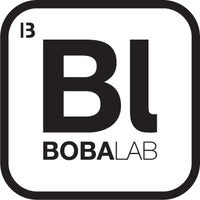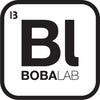
What is Tapioca? - How do I explain it to Customers?
Everyone has probably enjoyed tapioca before and not even known it! It’s commonly found in Bubble Teas but you may be surprised to know it’s found in puddings, soups, sauces and desserts. Tapioca come from the cassava root, it’s a starch that has been extracted from the root with no nutrients of its own which makes it an effective thickening agent. The popularity of tapioca has created a demand for cassava root around the world, it’s origins are found in Brazil and not Taiwan! The tapioca that bubble tea drinkers are most familiar with are small spheres (tapioca pearls), which when they are uncooked are opaque and can easily crumble. However, once they are cooked the right way the pearl transforms into a semi-transparent sphere that retains its shape similar to a gummy bear (malleable but solid).
Tapioca Pearls = Boba
You may be wondering why is it called Boba Tea and not Tapioca Tea and you can be forgiven for that confusion! Originally Boba Teas were known as Tapioca Milk Teas - it’s origins in Taiwan gave it the name in Chinese 珍珠奶茶 (zhen zhu nai cha). When the drink started taking off and spread to Hong Kong the locals called it Boba which means ‘Big Pearls’ due to its spherical shape. Hence why Bubble Tea is also known as Boba Tea and affectionately spoken by fans as ‘boba’. It’s popularity and part in popular culture have spawned the phrase ‘ do you want to get boba’ which means to drink bubble tea together. The boba or tapioca pearls that most bubble tea stores use are about a ¼ of an inch in diameter and have a gummy bear like texture. Tapioca pearls can come in different sizes depending on manufacturing production and can be dyed before setting or after cooking depending on the tapioca pearl type. This can allow for interesting dynamics with straw sizes (large and small) as well as different colours to create unique and colourful drinks!
Tapioca Nutritional Information
Tapioca contains no gluten meaning it’s great for gluten free cooking and for gluten-free customers. It’s also made from cassava root which means there are no animal product making it okay for vegans, vegetarians and people of religions with dietary restrictions. That means Tapioca is edible for all which is why it is often used as a thickening agent for commercially prepared food making it a good alternative to wheat and other grains.Tapioca is not known for its nutritional value as it is high carbohydrates and calories, hence why it should be enjoyed in moderation.
How do I explain it to customers?
- Suitable for vegans, vegetarians and contains no animal products
- Made from cassava root originating from Brazil and used in many food and drink items including sauces and desserts
- Tapioca pearls absorb the flavour of the liquid they are steeped in making it very adaptable and complementary.
- The texture of tapioca is similar to that of a gummy bear and it’s taste if placed in a sugar syrup is like a chewy caramel.
- Tapioca pearls can come in different sizes and can be dyed to have different colours
- Tapioca pearls are also known as Boba and that name come from Hong Kong where it was renamed by the locals as big pearls.
Comments
I’m interested opening one in London I wonder how can you help me one to open. Let me know please.
Thank you
FHrjZmcePxLYsIV
dtEsBUaRpIrVGNYi

